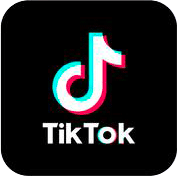Courses 課程
-
-
-
-
-
Dojos 道場
-
-
-
Student Info 案内
-
-
Resources 資源
-
-
-
Links 連環
-
-
   |

Liu Long Gong |

Matsumura Sokon |

Aragaki Seisho |

Kuniyoshi Shinkichi |

Kojo Kafu |

Nakaima Kenko |
What is Ryuhoryu?
Ryuhoryu (the Dragon and Phoenix Style) is a style of karate developed by Scot Mertz over a 9 year period starting in 2005 until 2014 (before the first curriculum was released). The goal of Ryuhoryu is to preserve Ryukyu Kingdom era martial arts practiced in Okinawa during that time frame.
How was the style developed?
The style was developed largely on Okinawa by training with various teachers who had insight into older versions of Okinawan arts. Then many versions of kata were analyzed and compared move for move and the results of the analysis are the kata practiced in Ryuhoryu. While conducting analysis we discovered that some individuals, even with the same teacher, were performing kata differently, so to establish our standard we took these kata apart move by move and went with a majority ruling (meaning 2 out of 3 people had to perform the movement the same way for us to accept it as a legitimate movement). The kata were reconstructed based on this analysis.
Who were the major influences for the material?
Our major influences were individuals who were teaching karate mostly in the 1800's. It was really difficult to pinpoint exactly who was teaching before that without getting into legends and rumors. So the focus became people who were teaching prior to 1879, or their Chinese counterparts. Some of these individuals included Matsumura Sokon, Aragaki Seisho, Kojo Isei, Kuniyoshi Shinkichi, Higashionna Kanryo, and Chinese individuals such as Iwa and Liu Longgong.
Since this material is all old, how did you determine the exact katas to use?
There is very little records for the exact versions that were being taught prior to 1879. What we did was take several versions of kata that were accredited to teachers prior to 1879. We would take multiple versions of the modern day kata and analyze them for common movements. In some cases we kept the exact kata, such as our Useishi from Uema sensei, but in other cases we would recreate the kata based on comparitive analysis, with the end result being a combination of all of the common traits found within the versions that were analyized.
While it is impossible to say that our material is 100% accurate to the time period (especially since most karate is from the 1920's and forward), we can say that the material contains all of the traits of material that is from that time. The Ryuhoryu style was composed in a way that it should be enjoyable to learn while keeping the older ideas from karate's past.
|
|
 |






